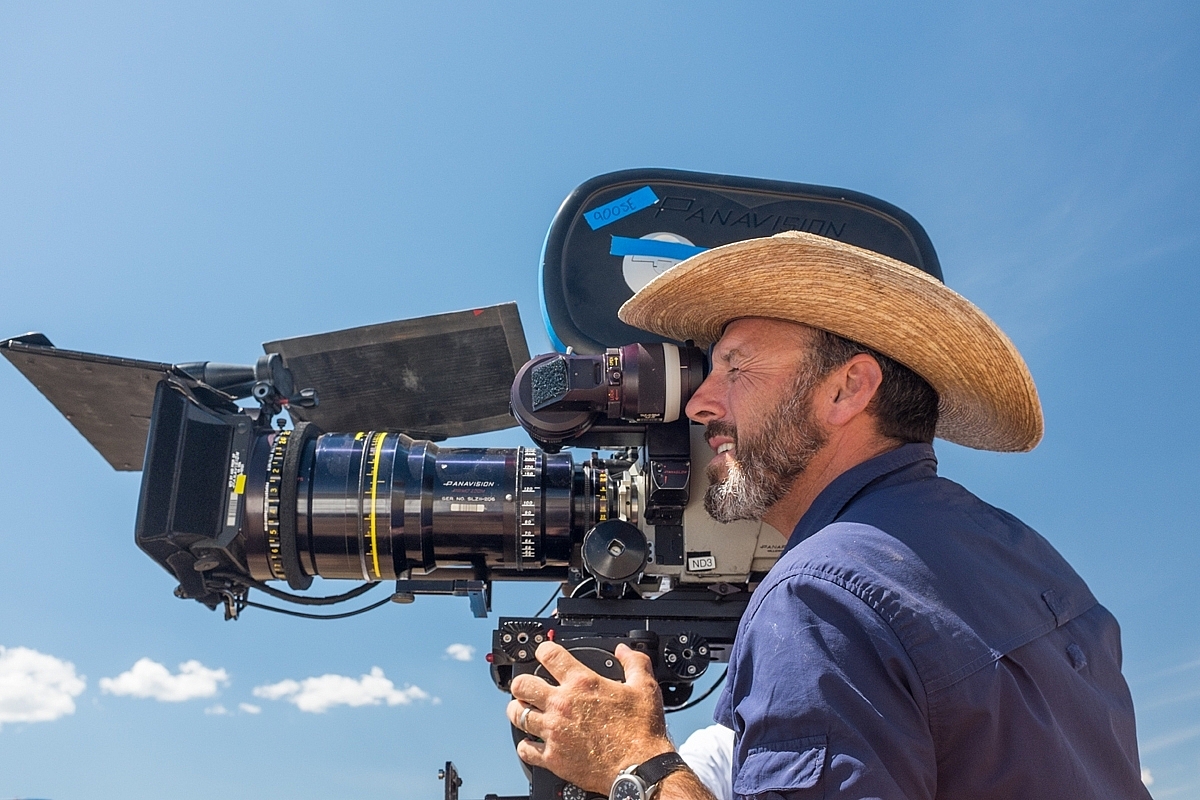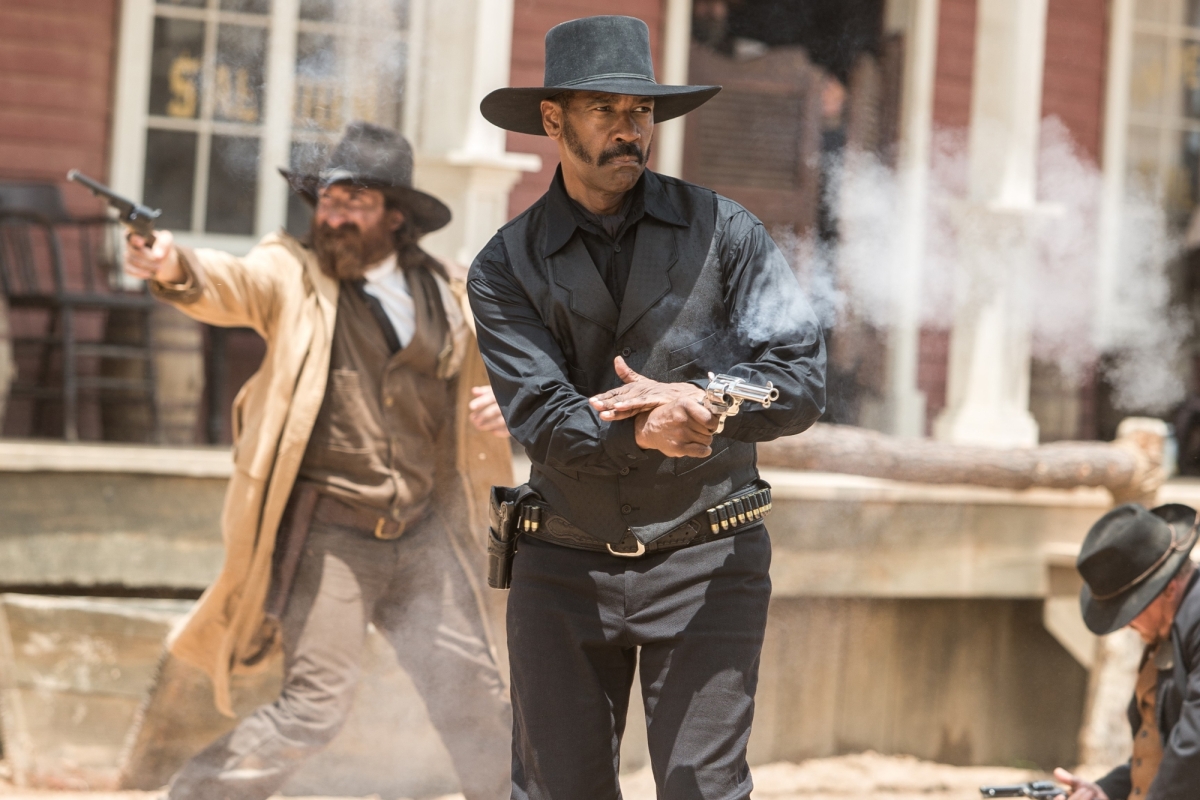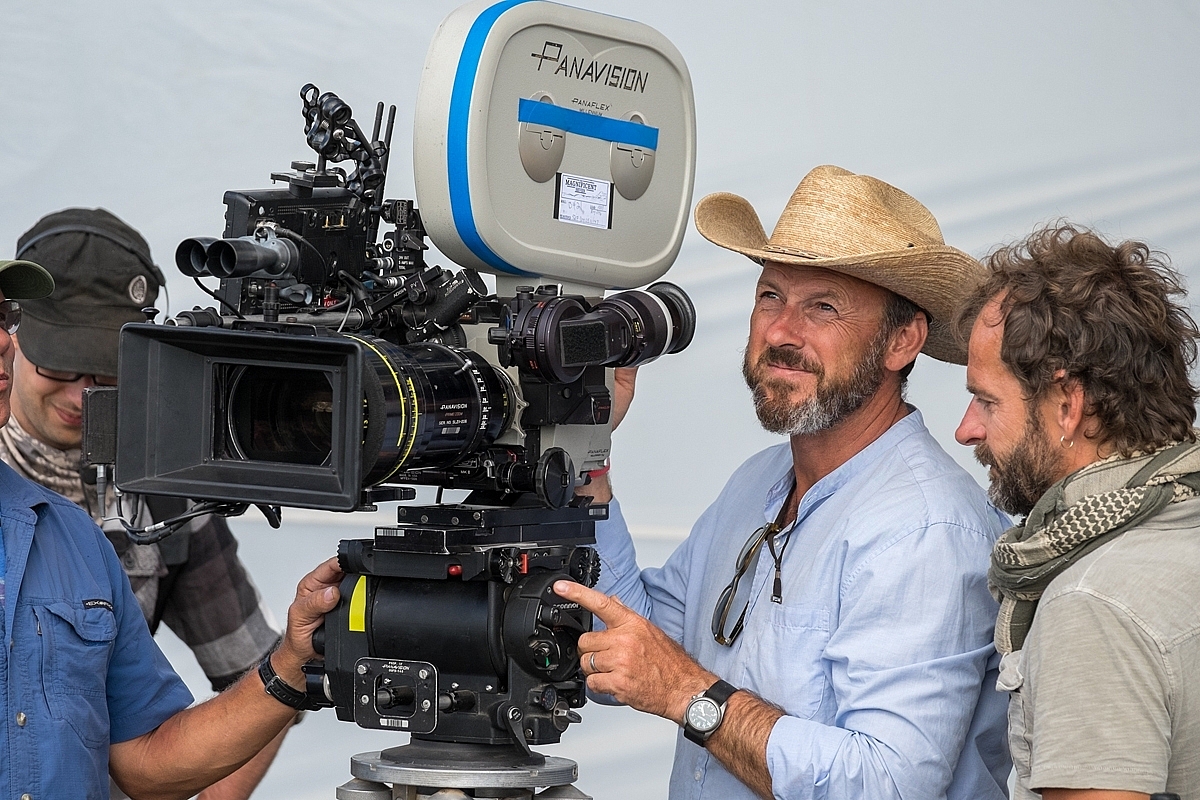Sharpshooter Mauro Fiore ASC hits bullseye with 35mm on 'The Magnificent Seven'

(l to r) Vincent D'Onofrio, Martin Sensmeier, Manuel Garcia-Rulfo, Ethan Hawke, Denzel Washington, Chris Pratt and Byung-hun Lee star in Columbia Pictures' THE MAGNIFICENT SEVEN.
"There was never any question that we would shoot The Magnificent Seven on anything other than 35mm film," declares Oscar-winning cinematographer Mauro Fiore ASC about director Antoine Fuqua's re-imagining of the classic Western action movie.
"Along with the engaging aesthetic you get from shooting on celluloid, there's also a versatility to the widescreen frame that enables you to maximize the majesty of exteriors, while also creating powerful close-ups, never mind the sheer practicality of having seven characters in the frame shot at the same time," he says. "By making this creative choice, we had a toolset at our disposal to put our own distinctive visuals on the big screen to portray the Wild West as a mythical place, whilst also paying an homage to the folkloric quality of Westerns by such legendary filmmakers as Sergio Leone, and the naturalism of Kurosawa's Seven Samurai ."

Cinematographer Mauro Fiore, ASC on set of The Magnificent Seven.
A remake of the 1960 Western of the same name, which itself was a reprise of Kurasawa's 1954 film, the $110m MGM/Columbia Pictures production of The Magnificent Seven follows the residents of Rose Krick as they come under siege by heinous tycoon Bartholomew Bogue. The vulnerable villagers engage the support of seven soldiers of fortune - a bounty hunter, a gambler with a penchant for explosives, a sure-shot gunslinger, a tracker, a professional assassin, a renegade outlaw and a Comache warrior - to protect them from the inevitable, brutal conflict.

Director Antoine Fuqua on the set of Metro-Goldwyn-Mayer Pictures and Columbia Pictures' THE MAGNIFICENT SEVEN.
The Magnificent Seven is the fourth movie collaboration between Fiore, who won the Academy Award for Best Cinematography on Avatar (2009), and Fuqua - the pair having teamed previously on Training Day (2001), Tears Of The Sun (2003), The Equaliser (2014) and Southpaw (2015).
"Most cinematographers dream about shooting period films or Westerns, as you really get to exercise your creative and artistic skills on these sorts of genres, but the scripts just don't appear so often these days," says Fiore. "From the outset, The Magnificent Seven was conceived as a widescreen celluloid experience-with-a-heart - where themes of heroism and existentialism are balanced with personality and levity. My last feature productions on celluloid were The A-Team (2010) and Runner Runner (2013), and I was looking forward to returning to the discipline of shooting and lighting with film. I was also interested to re-experience the innate richness of color you get with film, and to harness the variety of textures and contrast provided by different celluloid stocks for different points in the story arc."

On the set of Metro-Goldwyn-Mayer Pictures and Columbia Pictures' THE MAGNIFICENT SEVEN.
Principal photography began in May 2015 near Baton Rouge, Louisiana, where two huge, dust-filled, Western towns were built on fertile cow-pasture backlot. Other locations included St. Francisville and Zachary, Louisiana. A further two weeks of shooting took place in New Mexico.
Fiore's lens package combined of G, C and E-series Anamorphic glass, fitted to Panavision Panaflex Millennium XL2 cameras. "The bokeh, flares and little lens imperfections with Anamorphic can be as much a welcome character in a movie as the actors themselves," he notes.

Denzel Washington stars in Columbia Pictures' THE MAGNIFICENT SEVEN.
In terms of look and lighting, Fiore says the movie broke down into distinct moods - the idyllic world of the town before it gets overrun, the peril and brutality of the place under siege, and the changed circumstances of the aftermath - and he deployed a trio of film stocks to portray these atmospheres.
As he explains: "I used the slower Kodak Vision 3 5203 50D stock at the start of the story, to bring out the brilliance of the colors in the sets, the costumes and skies in exterior day scenes, and to evoke a romantic, almost magical, feel to the unspoilt town. When the place gets devastated and The Seven appear, I switched to the faster and higher contrast Kodak 5219 500T and Kodak 5207 250D stocks to bring some grit to the imagery, and enjoyed sculpting the actor's faces from light into dark shadows. As The Seven regain control, I went just with the 250D, keeping the higher contrast in the image to convey the stark, new reality of the place."
Fiore says he particularly relished shooting night-time sequences using 500T. "With film, the night-time image is really what you make it: the building and painting of each scene requires the considered control and artistic expression of the cinematographer. Digital sensors are always reaching into darkness, and sometimes you don't want to have to fight that that. While celluloid also captures detail in dark areas of the image, it drops down very nicely into black under your control."

Cinematographer Mauro Fiore, ASC on set of The Magnificent Seven.
He continues: "In a movie like this, night interior lighting is motivated by gas lamps, candles and firelight, and by the moonlight on exteriors. Returning to film, I found it unbelievably exciting and liberating. Furthermore, it's very impressive for the actors, director and crew when you suspend a 100ft x 50ft softbox above the set to create a moonlit exterior scene. Everyone gets a special thrill that they really are 'making a movie'."
Reflecting on coming back to 35mm celluloid for The Magnificent Seven , Fiore concludes, "The sheer depth, range, vibrancy and tonality of color you get from shooting on negative was a satisfying shock. The image is less clinical than digital - there are no hard edges, the colors blend smoothly, and there's a visually pleasing contrast curve from highlight to shadow. Film loves the warm light of the golden hours too. Furthermore, when you shoot with a film camera, as opposed to digital, you have fewer cables, no umbilical cord to a DIT, no one telling you the exposure, nor what the video signal looks like. Shooting on film puts the control and responsibility back into the hands of the cinematographer. Simple as that."